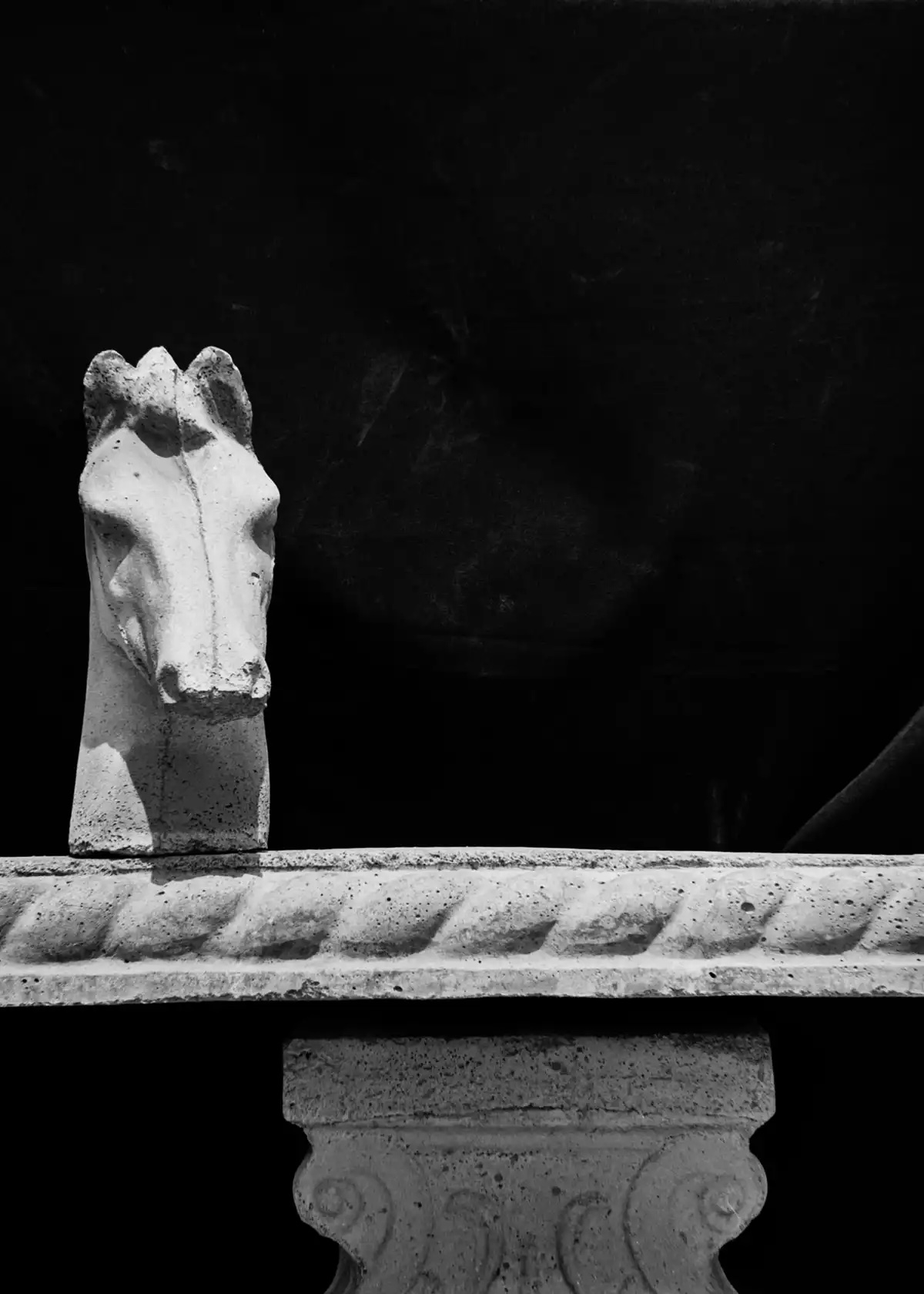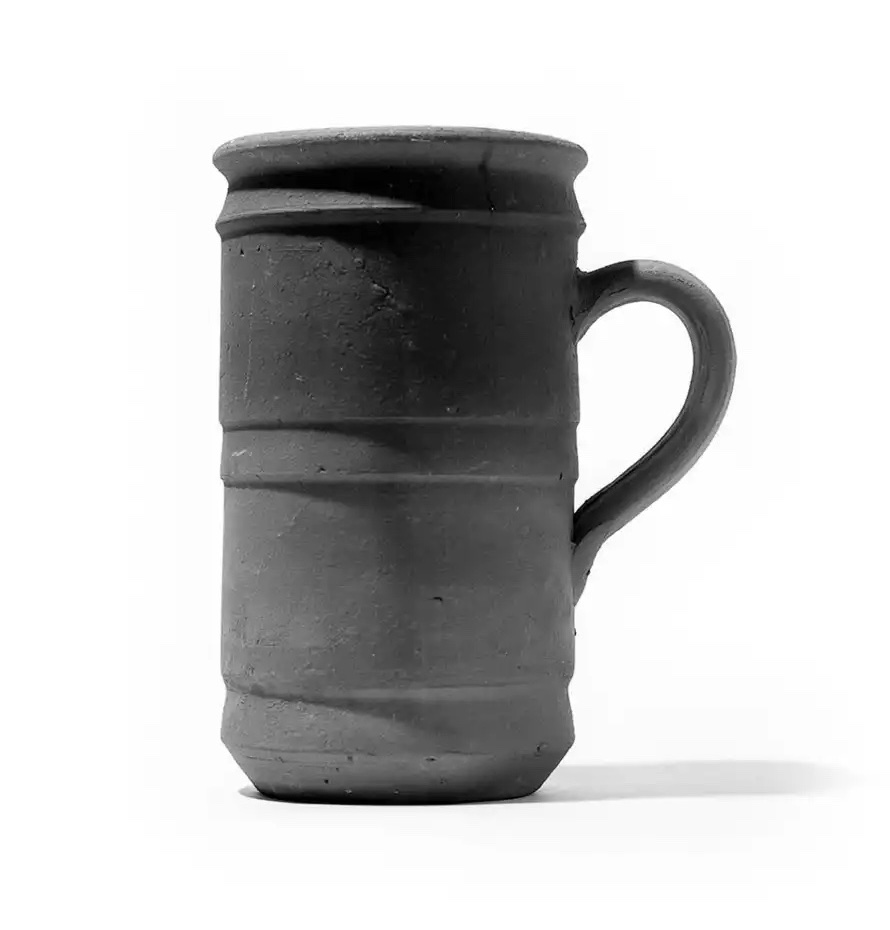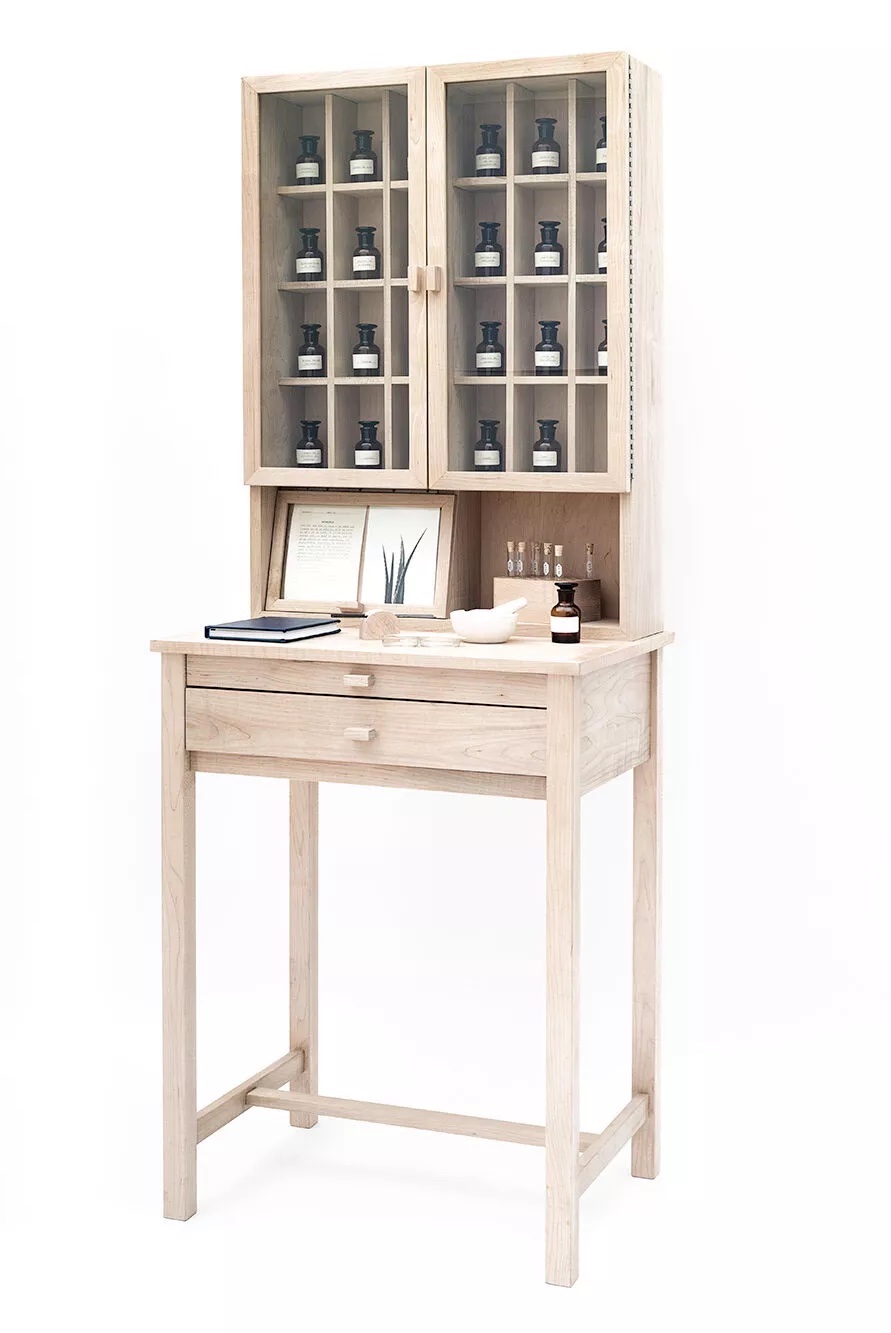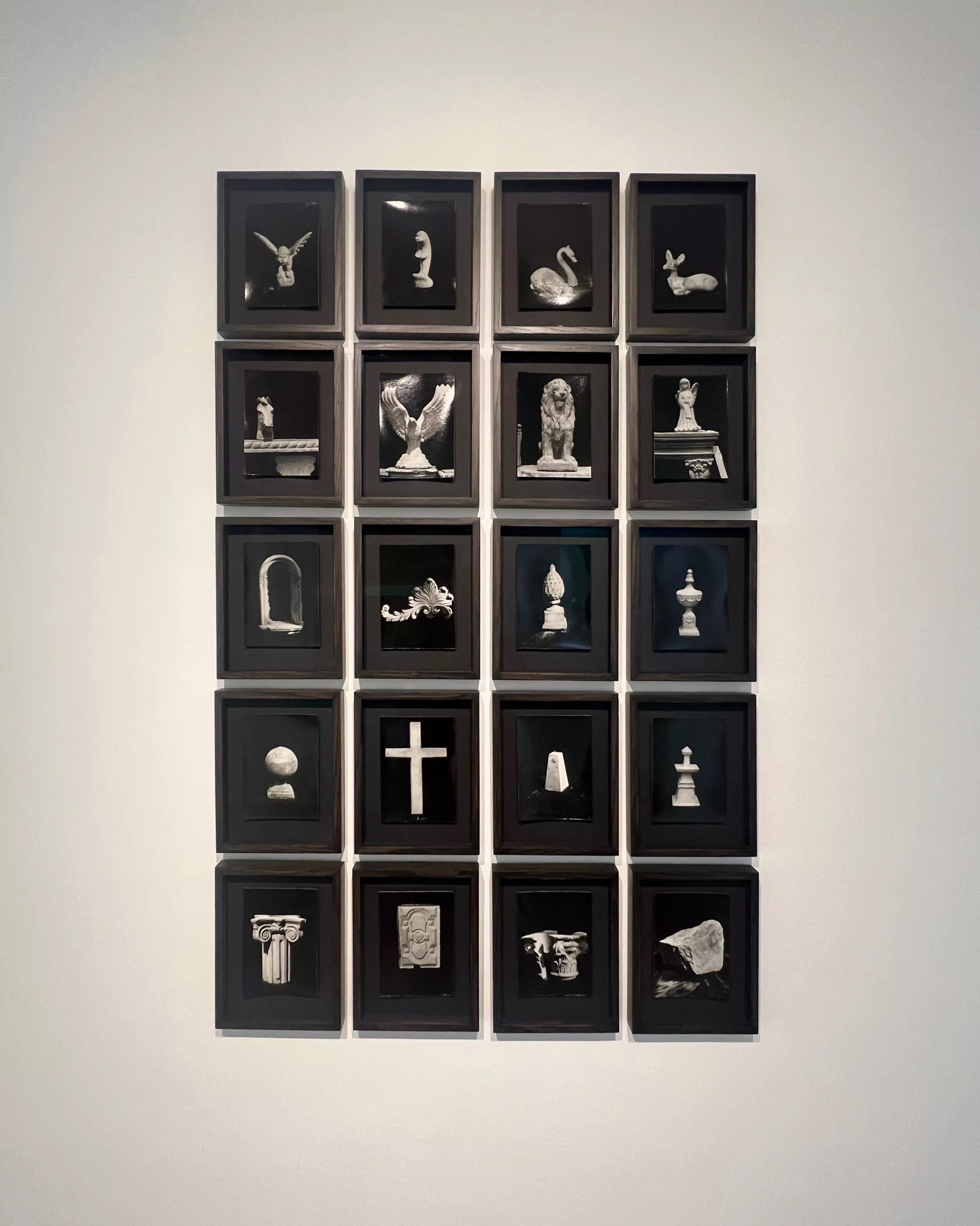
Review
Oswaldo Ruiz's Valences: Speculative Healing and Critique of Extractivism
by M.S. Yániz
Reading time
6 min
The memory of substance understands substance as the zero degree of matter and as a moral issue. To paraphrase the artistic vanguard: there is no ‘why’ with matter; it happens because it happens. It is the general focus of the work. The impact of matter – and its relationship with human beings – is determined both by history and scale. Whether a stone, a paper, or a mineral is good or bad depends, as Oswaldo Ruiz seems to suggest, on size. Poison and the mountain are the liminal topics in which this exhibition moves. Let us proceed step by step.
The exhibition includes two projects. The first, Todo lo sólido (Everything Solid), is an investigation into the extraction of limestone on the outskirts of Monterrey. At the end of the journey, within what we could consider the main room, there is the monumental photograph Unfolding (2020) mounted across the entire gallery wall. The piece shows what the artist calls "the scale of damage" (Ruiz, 2023). The landscape we see is a rough gray: the mountainside stripped by mining work and above it, a white residential area. Everything is made of limestone. This material is also used to create imitations of neoclassical antiquities, which are placed on facades or interiors. This gesture constructs a detached identity of class desire and colonialism, because even though it is an expensive area, when seen as a landscape, only solitude is perceived.

The stone extracted from the mines returns to build the city. It's worth noting that in other contexts, like the Riviera Maya where until a few years ago it was Law, the most ecological approach was to build only with endemic materials to avoid disrupting the ecosystem. In Monterrey, the action is not ecological; the artist calls it a "cycle of damage." Certainly, it's not aesthetically pleasing, and even though it now serves to be populated, it's merely a change from mine-gray to city-gray, where the growth of plant life is impossible. There's no aesthetic surplus value in this movement, and it also doesn't allow for the growth of non-human life.
The second project is titled Materia mnémica (Mnemonic Matter) and was carried out at Casa Gallina, in collaboration with the residents of Santa María la Ribera, Mexico City. Oswaldo Ruiz noticed the presence of homeopathic pharmacies in the neighborhood and the common use of these medicines among the inhabitants. Based on the widespread question of whether it's medicine or a placebo, the artist took homeopathy as a poetic mechanism to engage in a speculative dialogue between the ideas of healing, matter, damage, and the inhabitants of the neighborhood. Ruiz orchestrated a series of discussions, and among the most committed attendees, questions remained about what has caused them harm and what it is they seek to heal. The answers were concrete things of various kinds, like "Pulque," "Radioactive iodine," "Money," or "outlines of Batman's bat."

Within the project, the homeopathic principle that like things are cured by like things is emphasized, and so they created homeopathics using the very substances that had hurt them. The idea is to dilute the harmful matter to a minimum in order to transform it into healing, through dissolution in innocuous mediums like sugar or raw milk. The result is a poetic display – mediated by photographs and a laboratory cabinet – where the speculation of the residents and the artist becomes a leap of hope to transform the bad into the good through alchemical manipulation of materials. An intangible collaboration ethic between memory, faith, tangible facts, and photography.
The exhibition is precise and successful, both in compositions resembling cabinets of curiosities and in the overwhelming and beautiful images it presents. In the photographic work, whether it's a garlic bulb (from Mnemonic Matter) or a desolate gray landscape (from Everything Solid), there's an aesthetic yield. The chiaroscuro isolates the objects and presents them as laden with history; each one is the result of a residual process of time and human work.

A certain enlightened impetus from the artist resolves pieces from both projects like taxonomic cabinets. In Mnemonic Matter, the piece of the same name is the desk presenting the creative laboratory of homeopathics. On it, there's a small showcase with 24 compartments, and on each one (except the last space, thus leaving the research open) is the resulting homeopathy with the name of the introduced material. In Everything Solid, 20 photographs are arranged on a grid panel, just like in the showcase. I'm interested in how the exhibition format of the grid or panel juxtaposes the micro with the macro. Decontextualized in their pristine frames, it seems that only the memory of the substance is discussed, but the showcase presents a speculative cure, and the photo panel presents a social critique of ostentation and extractivism. The valence between one and the other is the scale of substance in relation to the human being. Thus, the micro is taken as healing, and the macro as harmful: the perception of substance is related to the anthropomorphic scale.

Exhibitions like The Substance of Matter tend to leave me astounded. They make me believe that art is a different world from the real one. Without its imperfections and coincidences, it's a world that takes place as one walks through different rooms and allows oneself to be affected by the sensations that are generated. I think that photography is the condition of possibility of conceptual art and the medium through which globalization takes place. It's through the photograph that we learn about ephemeral actions and the rest of the world immediately. Because of that privilege inherent to the medium, Oswaldo Ruiz's exhibition carries more than just aesthetics.
The photographic device with which Oswaldo Ruiz works allows for the revelation of capitalist operations as a displacement of materials as well as images and desires. The memory of substance is not poetics, but an ethical signaling to the scale of materials in practical life within capitalism. The neoclassicism that portrays limestone accessories borders on the perfection of their assembly, which combines real and photographic objects. The quantity of geolocated substance emerges as an artistic desire, and the solution is to narrate an anthropocentric dialogue of art as healing and scale as ecological propaganda.
Translated to English by Sebastián Antón-Ojeda
The exhibition is on view through September 2nd at Patricia Conde Galería.
Published on August 12 2023